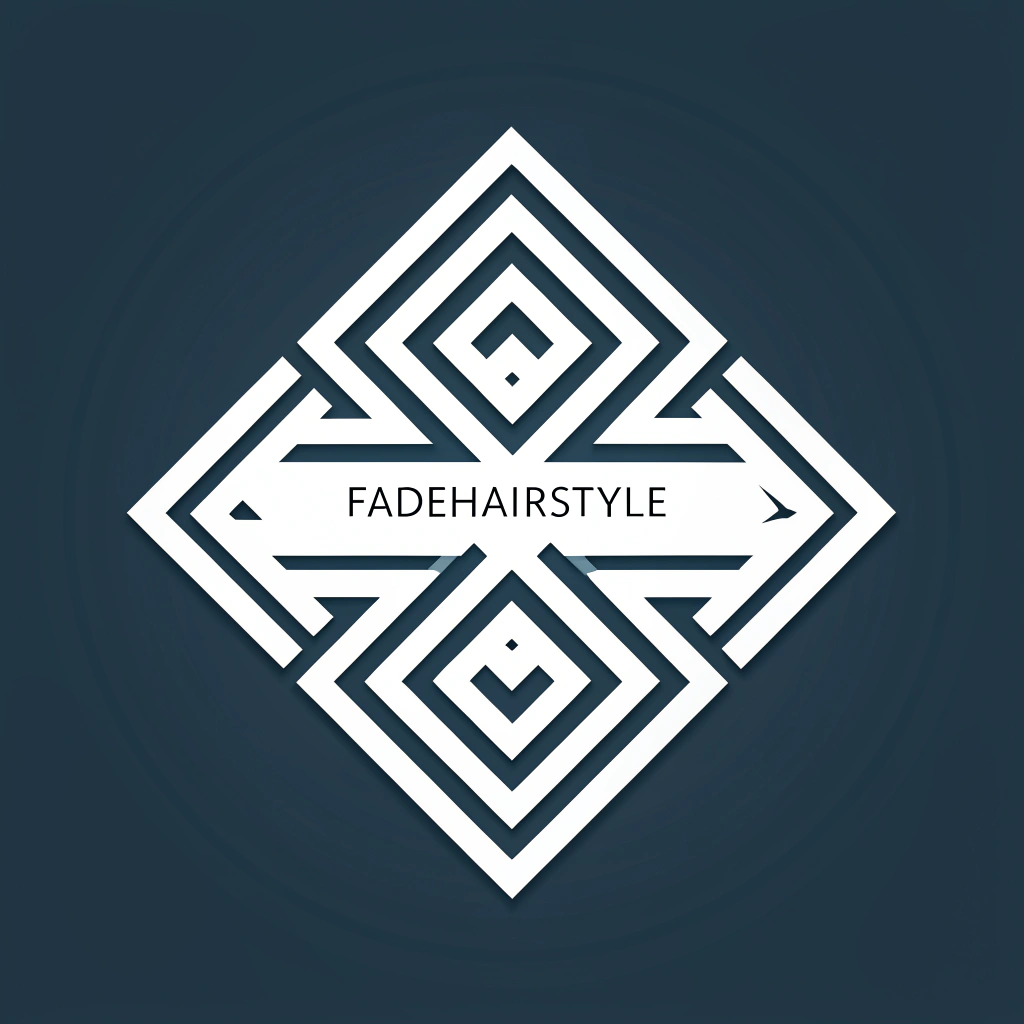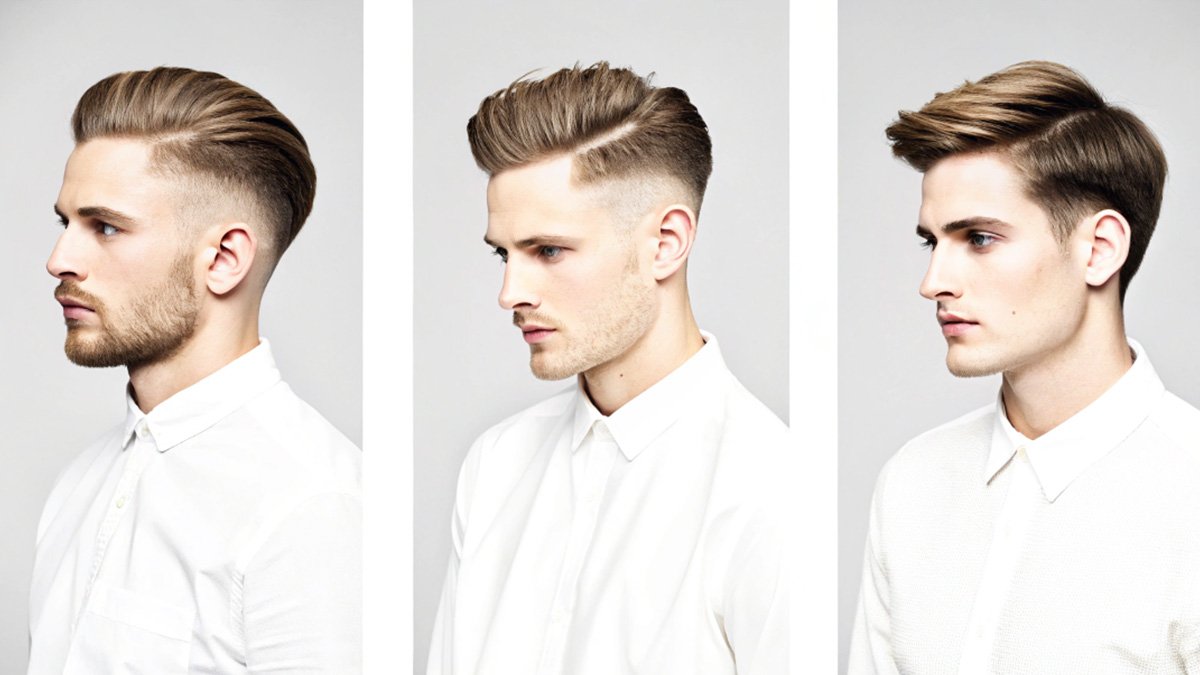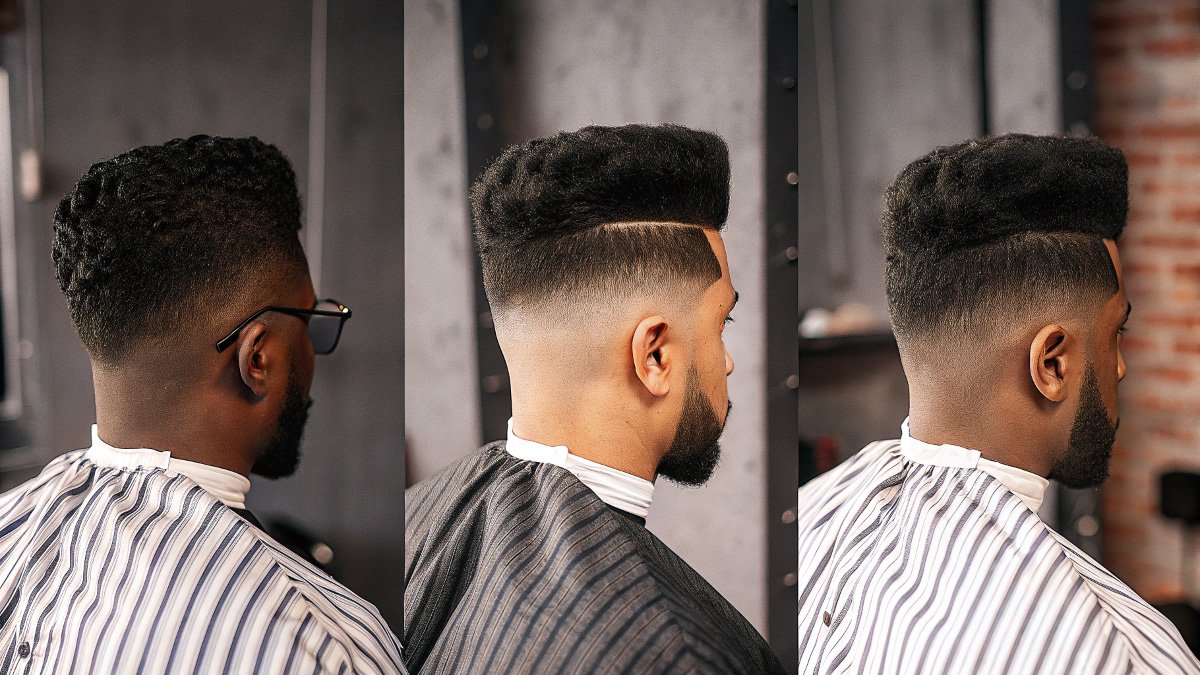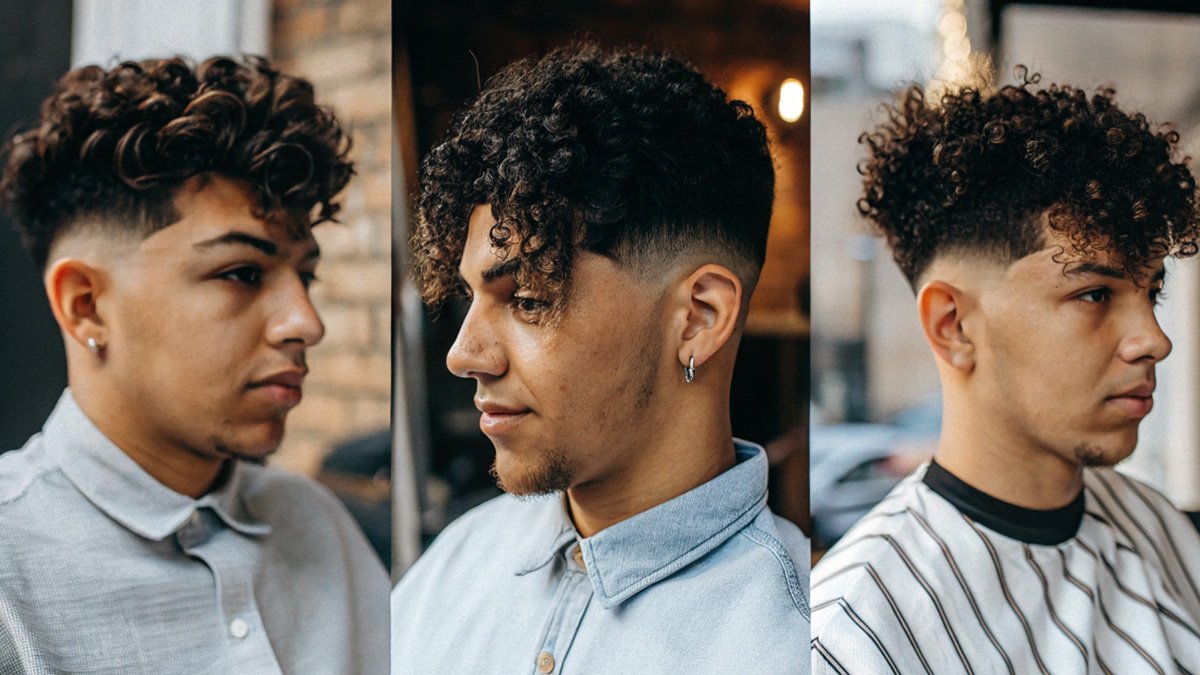Men’s taper cuts change how you look. Barbers receive more requests for this cut than any other style. This manual covers different types and shows how they compare to other popular cuts.
This cut gives you clean lines and a modern appearance. People often confuse different cut types. We will examine how taper cuts compare to other options and help you select the best choice.
Let’s begin with basic information and cover everything you need to know.
What Is a Taper Fade?
This cut creates smooth changes from longer locks on top to shorter strands on the sides and back. Your stylist cuts the strands progressively shorter as they move down toward your neck and ears. The result produces clean, graduated lines that work for many strand types and facial structures.
People often ask about differences between regular cuts and taper versions. The main difference lies in transition length. Taper versions extend higher up the scalp and create more gradual changes in length. This gradual shift makes taper cuts more subtle than standard versions.
The Anatomy of a Taper Fade
Your professional starts with the longest length at the crown of your scalp. As they move downward, they use different guard sizes to create seamless blends. The strands get progressively shorter until reaching the shortest length near your natural neckline.
The change point, where the cut begins, can sit at different heights on your scalp. This placement affects how dramatic or subtle your cut appears. Your facial structure and personal preferences help determine the ideal placement.
Different Heights of Taper Fades
A high version starts the change near the crown of your scalp. This creates a bold appearance that draws attention upward. The high placement works well if you want to emphasize volume on top or create the illusion of a longer facial structure.
The mid version’s change point sits around the temples. This placement offers flexibility and suits most facial structures. The moderate height balances your features while maintaining clean lines.
Your professional creates low versions just above your ears. This subtle option works well in conservative settings. The low placement keeps more strands on the sides while still providing clean lines.
Taper Fade vs Other Popular Fade Styles
Understanding how taper cuts compare to other cut styles helps you communicate better with your stylist. Let’s examine the key differences between various cut types.
Taper Fade vs Regular Fade
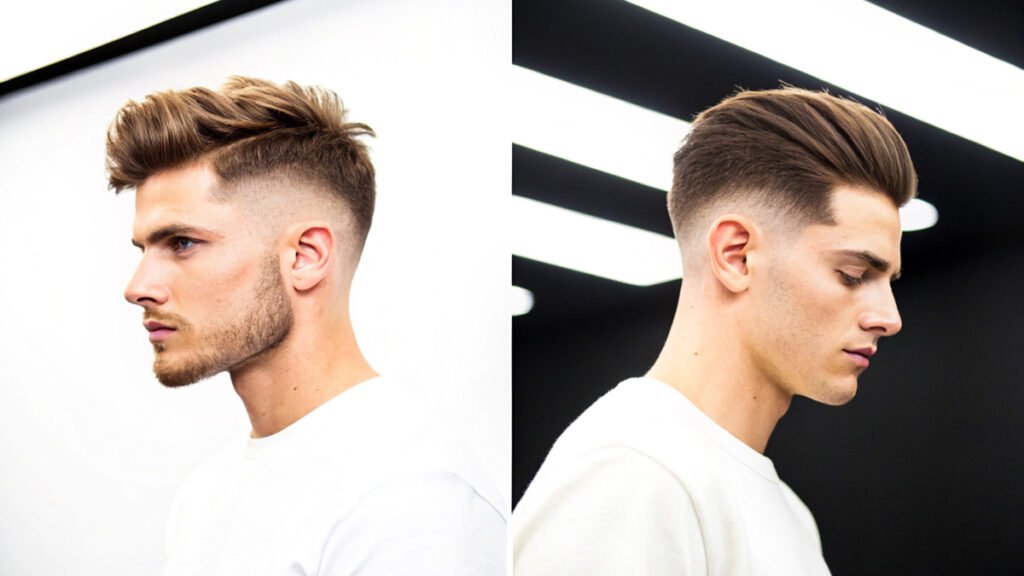
Regular versions create shorter, more dramatic changes than taper versions. The strand length changes quickly, often going from extended to very brief within a small area. Taper versions maintain more length throughout the sides and back.
The gradual nature of taper versions makes them more flexible. You can style them professionally for work or casually for social occasions. Regular versions make stronger statements and might not suit all environments.
Low Fade vs Taper Fade
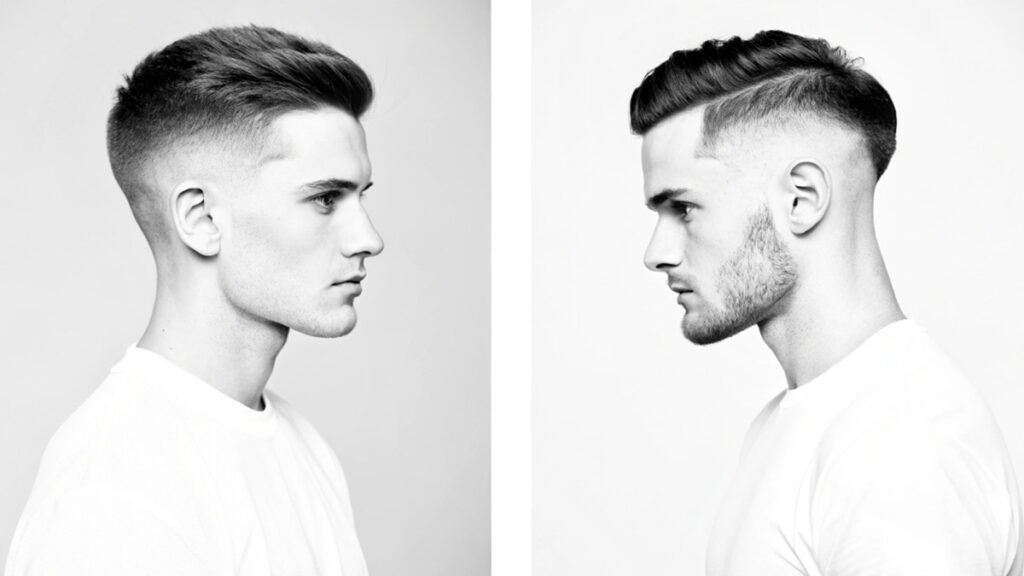
Low versions concentrate on the change area close to your ears and neckline. This creates sharp contrast between the top and sides. Taper versions extend the change higher, resulting in more natural appearances.
Many people choose low versions for modern, edgy appearances. The defined line where the cut begins catches attention. Taper versions blend more smoothly, drawing less attention to the change point.
Mid Fade vs Mid Taper
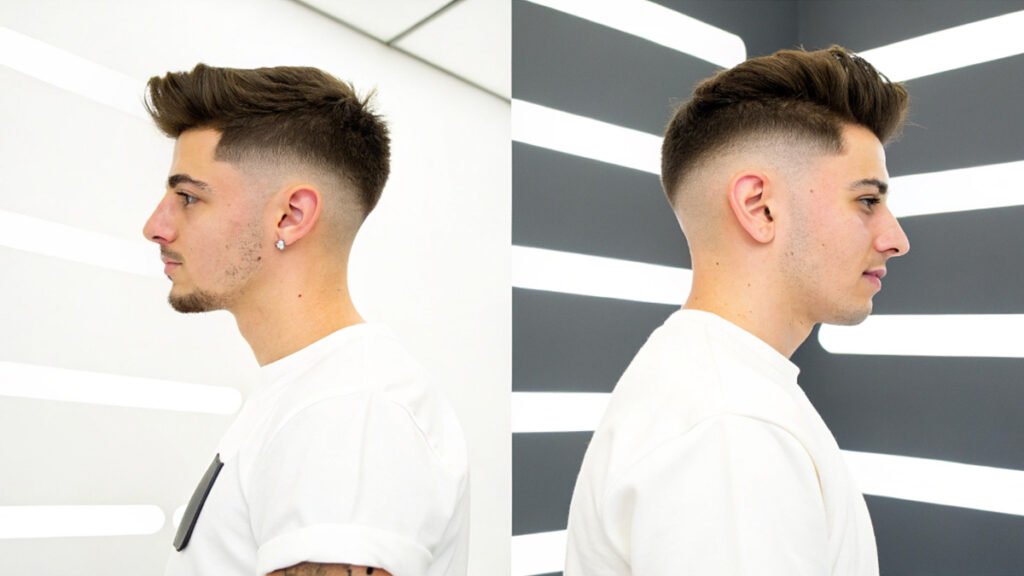
Mid versions and mid tapers both start their changes around the temples. The difference lies in how quickly the strand length changes. Mid versions create more noticeable contrast, while mid tapers maintain gentler gradients.
The choice between these styles often depends on your strand texture and desired maintenance level. Mid tapers require less frequent touchups because the change appears more natural as it grows out.
Temple Fade vs Taper Fade
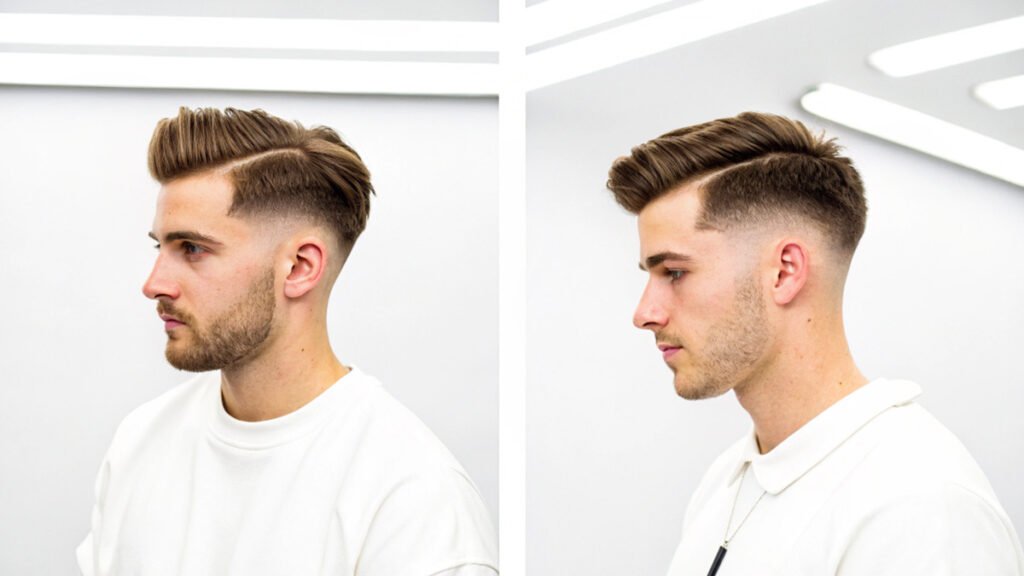
Temple versions focus on creating sharp changes around your temples and sideburns. This cut, also called a temp version, produces clean lines that frame your features. Taper versions affect larger areas and create softer changes.
The temple version works well with facial strands because it creates clear boundaries. Taper versions offer more flexibility in how you maintain your facial strands since the changes remain subtle.
Drop Fade vs Taper Fade
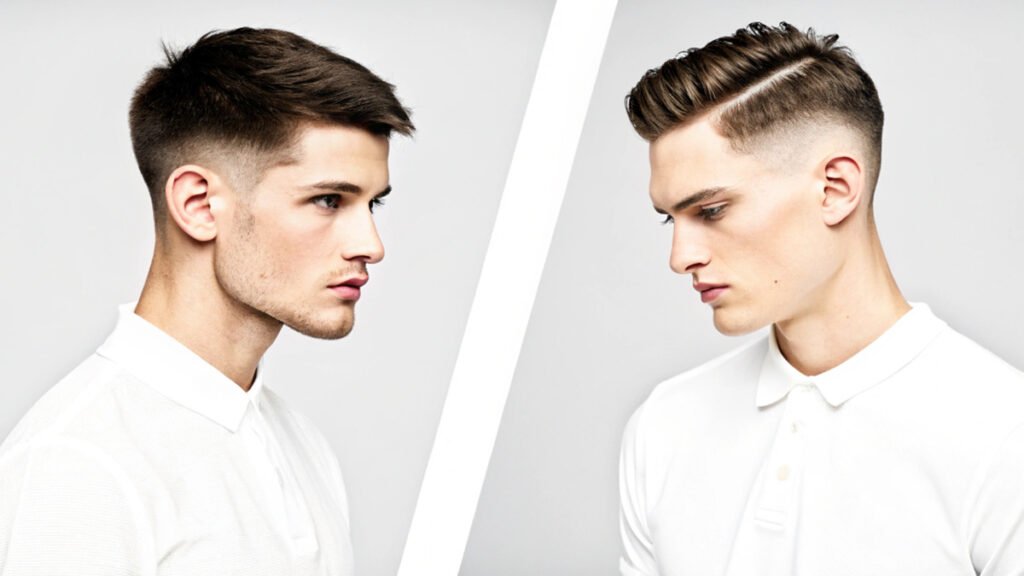
Drop versions follow curved lines that drop behind your ear. This creates arch effects that can complement your skull structure. Taper versions maintain more consistent heights around your skull.
The curved nature of drop versions adds visual interest to your cut. Taper versions keep things simpler while still providing clean appearances.
Choosing the Right Taper Fade for Your Face Shape
Your facial structure influences how different cut styles appear on you. Let’s explore which taper variations work best for different facial structures.
Round Face Shapes
If you have a round facial structure, higher taper versions can help elongate your appearance. The vertical lines created by the cut draw the eye upward. This creates the illusion of a longer, more angular facial structure.
Creating volume on top while keeping the sides neat with a taper cut balances your features. The gradual change prevents harsh lines that might emphasize facial roundness.
Square Face Shapes
Square facial structures benefit from the softening effect of taper cuts. The gradual change helps balance strong jawlines without completely hiding them. Mid-to-low taper versions work particularly well for square facial structures.
The key lies in maintaining enough strands on the sides to complement your facial structure. Too brief of a cut might make your features appear wider than desired.
Oval Face Shapes
Oval facial structures can carry most taper variations successfully. This flexible facial structure allows you to experiment with different cut heights and styles. Focus on choosing a cut that matches your personal preferences and maintenance needs.
Consider how much time you want to spend styling your strands each day. Higher taper versions might require more attention to detail when styling the longer top section.
Long Face Shapes
Longer facial structures benefit from low to mid taper versions. These variations keep more strands on the sides, which helps add width to your features. Avoid very high taper versions, as they might make your features appear even longer.
Creating texture on the sides with a gentle taper cut adds balance to your features. This helps achieve more proportionate overall appearances.
Maintaining Your Taper Fade
A fresh taper cut appears great, but maintaining it requires some effort. Understanding proper maintenance helps your cut appear better for longer periods.
Touch Up Schedule
Most taper cuts need touchups every 2-3 weeks. The exact timing depends on your strand growth rate and how clean you want to keep the cut. Some people prefer weekly touchups to maintain very sharp lines.
Watch for signs that your cut needs attention. When the change starts appearing less smooth or the shortest areas begin showing noticeable growth, it’s time for a touchup.
Daily Styling Tips
Styling a taper cut depends on the length you keep on top. Use appropriate products for your strand texture and desired finish. Start with small amounts of product and add more if needed.
Blow drying helps create volume and control in longer sections. Direct the airflow in the direction you want your strands to lay. Use a brush or comb to direct the strands while drying.
Products That Work Best
Choose products based on your strand type and the appearance you want to achieve. Matte products work well for natural appearances, while pomades create more shine. Consider these options:
For fine strands, lightweight products prevent weighing down your cut. A volumizing mousse or light cream adds body without heaviness.
Thick strands benefit from stronger hold products. Use medium to firm hold pomade or clay to maintain control throughout the day.
Textured strands need moisture-rich products. Look for creams or oils that fight frizz while defining your natural texture.
Advanced Taper Fade Variations
Beyond basic taper cuts, several variations add unique elements to the cut. These options help you customize your appearance further.
Burst Fade vs Taper Fade
Burst versions create circular effects around the ear, radiating outward. This differs from standard taper cuts, which maintain consistent heights. The burst effect adds visual interest while keeping the clean lines of a cut.
This cut works particularly well for people who want to stand out. The circular pattern draws attention while remaining professional enough for most settings.
Taper Fade with Design
Adding simple designs to your taper cut personalizes the cut. Lines, patterns, or forms cut into the area create unique effects. Keep designs subtle for professional environments or go bold for casual settings.
Talk to your stylist about design placement and complexity. Simple lines often appear best and grow out more naturally than intricate patterns.
Textured Taper Fade
Textured cuts add movement and dimension to taper versions. Your stylist creates texture by point cutting or using specific techniques that break up the smoothness of the cut.
This variation works especially well for thick strands. The texture removes bulk while creating visual interest throughout the cut.
Making Your Decision
Choosing between different cut styles seems complicated, but breaking down your preferences helps. Consider these factors when deciding on your cut:
Maintenance Level
Think about how often you want to visit the stylist. Lower cuts grow out more naturally and require fewer touchups. Higher cuts need more frequent maintenance to stay sharp.
Consider your morning routine too. Some styles require more daily styling time than others. Be honest about how much effort you want to put into your strands each day.
Professional Environment
Your workplace culture influences which cut styles work best. Conservative offices might prefer lower, more subtle cuts. Creative environments allow for higher cuts or added designs.
Remember that taper cuts offer more flexibility than other cut types. Their gradual nature helps them fit into most professional settings.
Personal Style
Your overall appearance should complement your cut. Think about how different cut heights affect your appearance. Consider how the cut works with your wardrobe and general aesthetic.
Don’t feel pressured to choose extreme styles if you prefer subtlety. The right taper cut enhances your features while matching your personality.
Getting the Best Results from Your Barber
Communication with your stylist ensures you get the results you want. Use these tips to make the most of your cut:
Clear Communication
Show your stylist pictures of styles you like. Explain which elements appeal to you most. Be specific about the cut height and change cut you want.
Listen to your stylist’s suggestions. They might recommend adjustments based on your strand type or facial structure. Their experience helps achieve the best results for your specific features.
Regular Maintenance Schedule
Set up a maintenance schedule that works for your cut and growth pattern. Regular visits help maintain the clean lines of your cut. They also allow small adjustments to perfect the cut.
Book your next appointment before leaving the shop. This helps you stay on track with maintenance and keeps your appearance looking fresh.
Building a Relationship
Finding a stylist who understands your preferences makes maintaining your cut easier. They learn exactly how you like your cut and can suggest improvements over time.
Stay with the same stylist when possible. This consistency helps achieve better results as they become familiar with your strands and preferences.
FAQ About Taper Fades
1. What is a taper fade?
A taper cut creates smooth strand changes from extended on top to brief on sides. The strands get progressively shorter down toward the ears and neck.
2. How often should I get a taper fade trimmed?
Visit your stylist every 2-3 weeks to maintain the cut’s form. Your strand growth rate determines the exact timing.
3. What face shapes work best with taper fades?
Taper cuts suit all facial structures. High cuts lengthen round features. Low cuts balance extended features. Mid cuts complement oval and square features.
4. What products do I need for a taper fade?
Use pomade for shine, clay for matte finish, or cream for natural appearance. Pick products based on your strand texture and desired cut.
5. What’s the difference between a taper fade and a regular fade?
Taper cuts create gradual changes and keep more length. Regular cuts make sharper changes in length and cut the strands shorter on the sides.
Conclusion
Taper cuts offer flexibility and appearance that works for many people. Understanding the differences between cut types helps you choose the right variation for your needs. Remember that finding the perfect cut might take some experimentation.
Take time to consider your lifestyle, maintenance preferences, and personal appearance when choosing a cut. Communicate clearly with your stylist and maintain regular appointments to keep your appearance looking sharp.
With proper care and maintenance, your taper cuts can become your signature appearance. The clean lines and professional look make it a reliable choice for any occasion.
